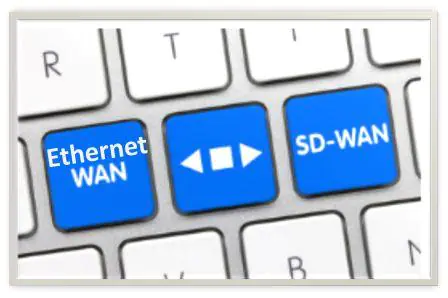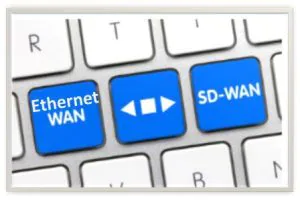Ethernet WAN
Ethernet was initially considered not suitable as a WAN access technology because of the maximum cable length supported was only up to a kilometre. However, newer Ethernet standards with fiber optic have made Ethernet an important WAN option. For example, the IEEE 1000BASE-ZX standard supports up to 70 km of distance. Ethernet WAN provides high-bandwidth connectivity for point-to-point networks, data center, storage, convergence applications, LAN extension and Internet access. It is a cost-effective and simple to implement and also support in multi-site environments. Ethernet-WAN is reliable technology available everywhere. It delivers an efficient, fully restorable, easily managed network.
Ethernet WAN has become the choice of enterprises for wide-area network (WAN) because of the higher data-connectivity rates and flexible services, including the availability and large selection of WAN implementation. Service providers offer Ethernet WAN service using fiber optic cabling by many names, including Metropolitan Ethernet (MetroE), Ethernet over MPLS (EoMPLS), and Virtual Private LAN Service (VPLS).
Ethernet WAN is a high-speed system, which increases bandwidth and eliminates expensive conversions to other WAN technologies. It connects multiple sites cost-effectively, in an urban area, to each other and the Internet. It can easily connect to existing Ethernet LANs, reducing installation costs and time.
Ethernet WAN also enables advantage of productivity-enhancing using the IP applications that are not easy to implement on TDM or Frame Relay networks. Ethernet WANs now become the popular system and now commonly being used to substitute the Frame Relay and ATM WAN links.

